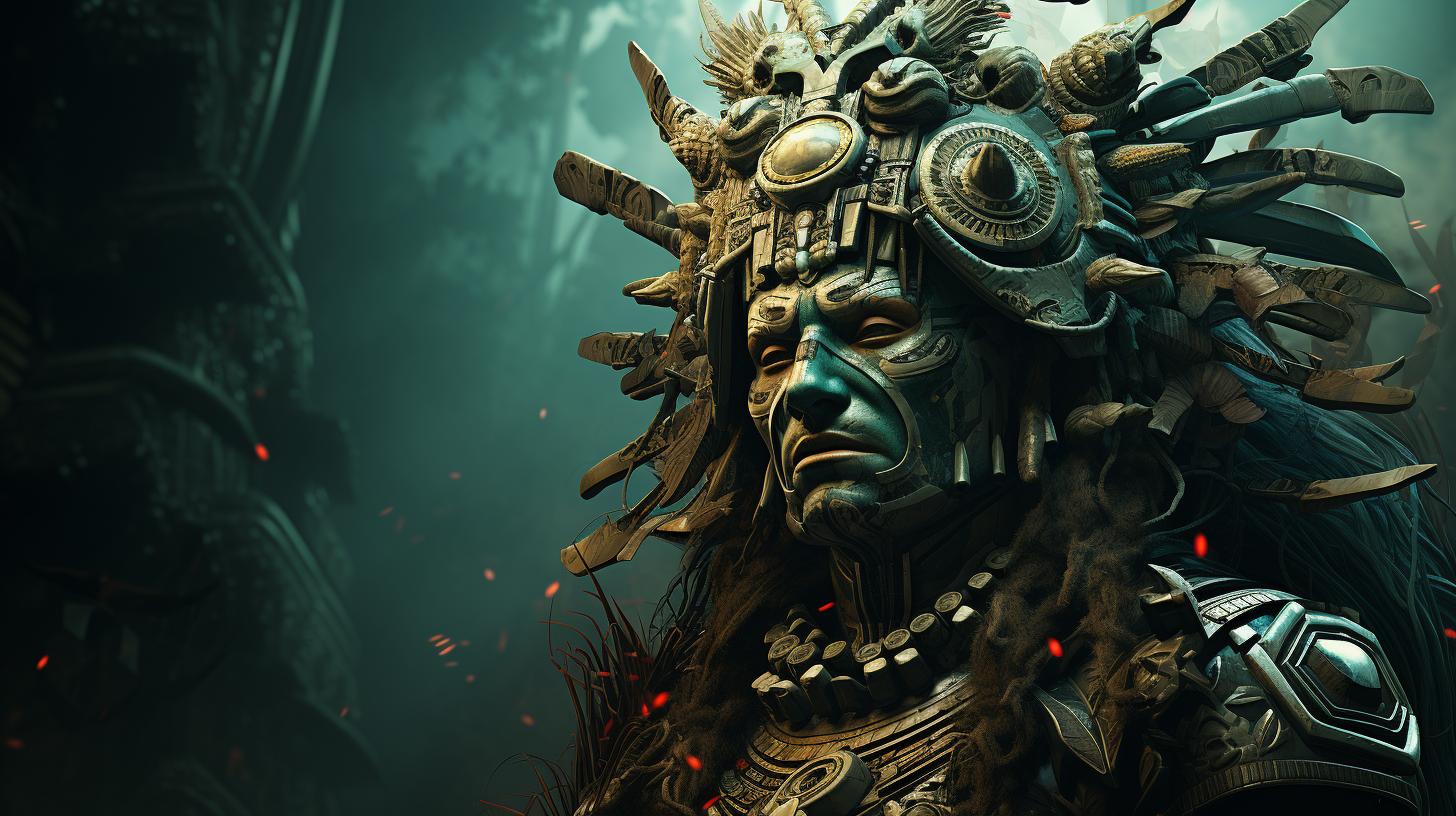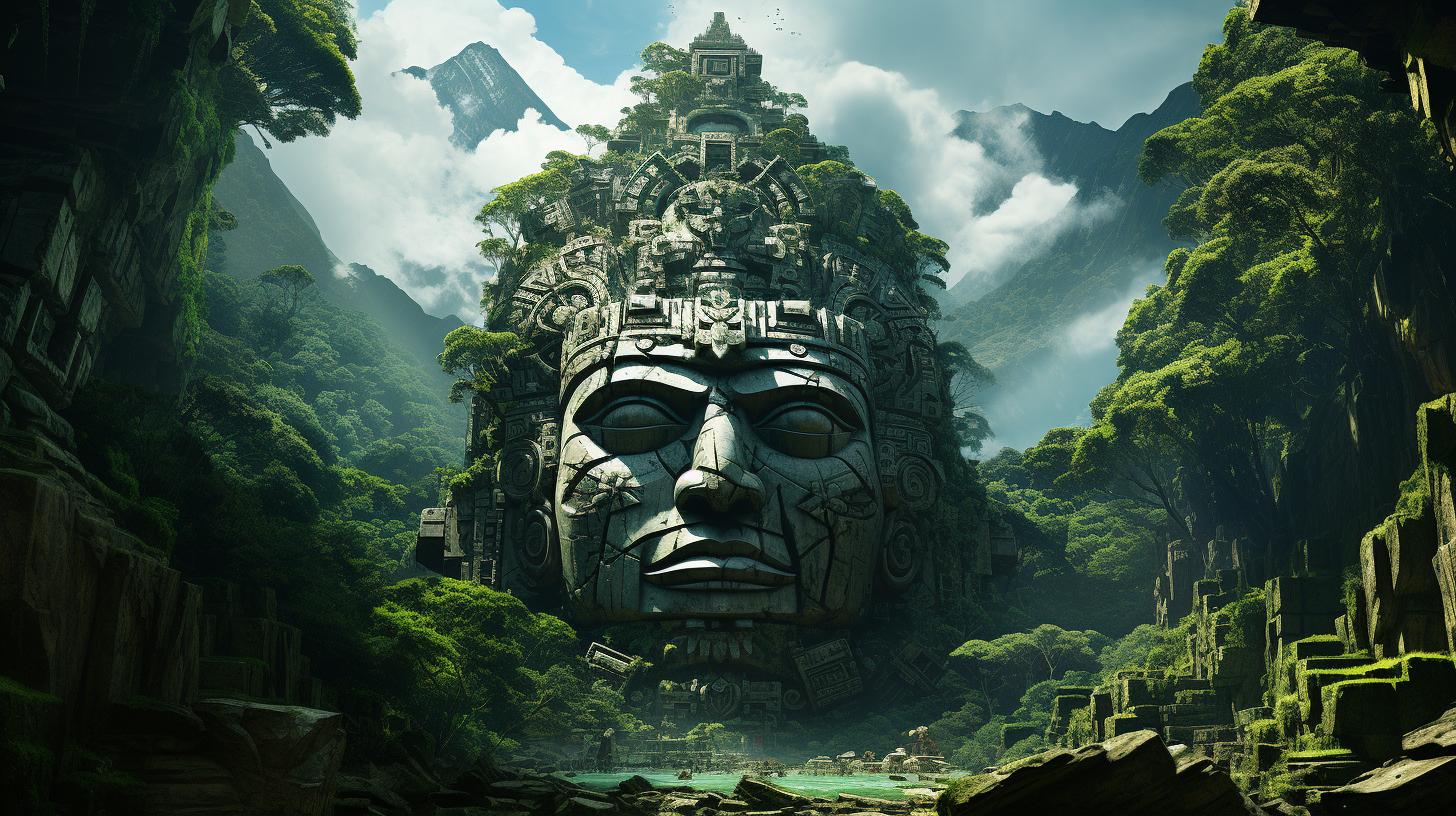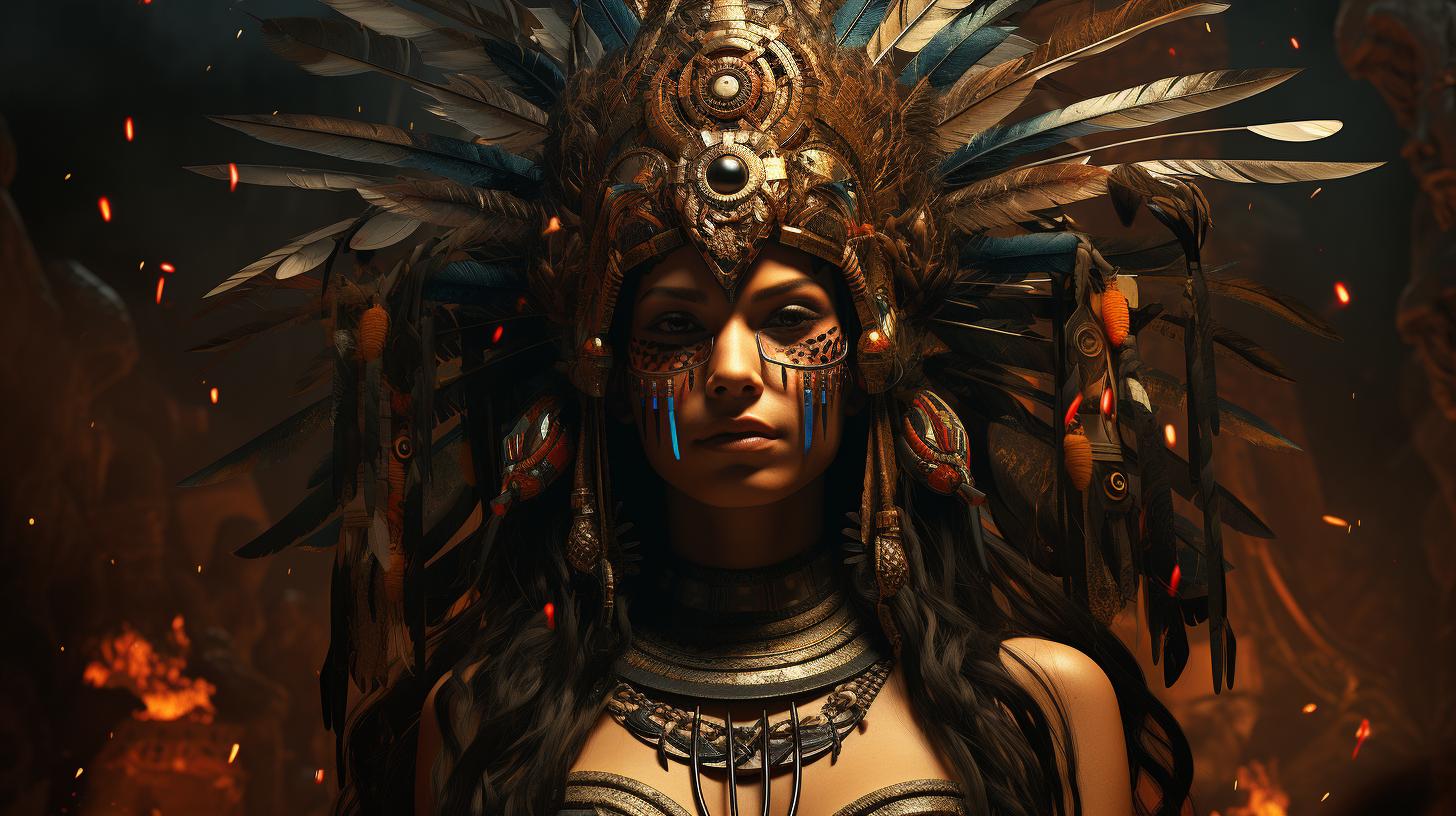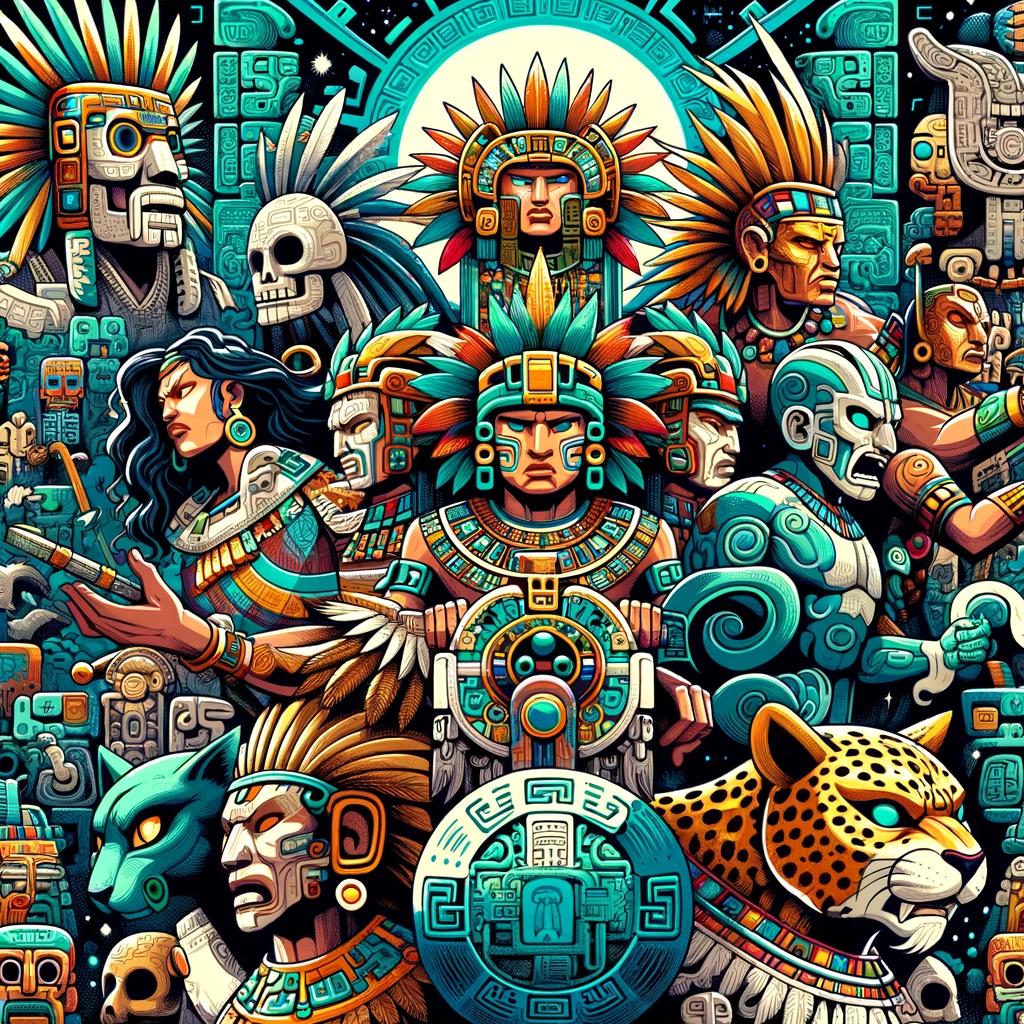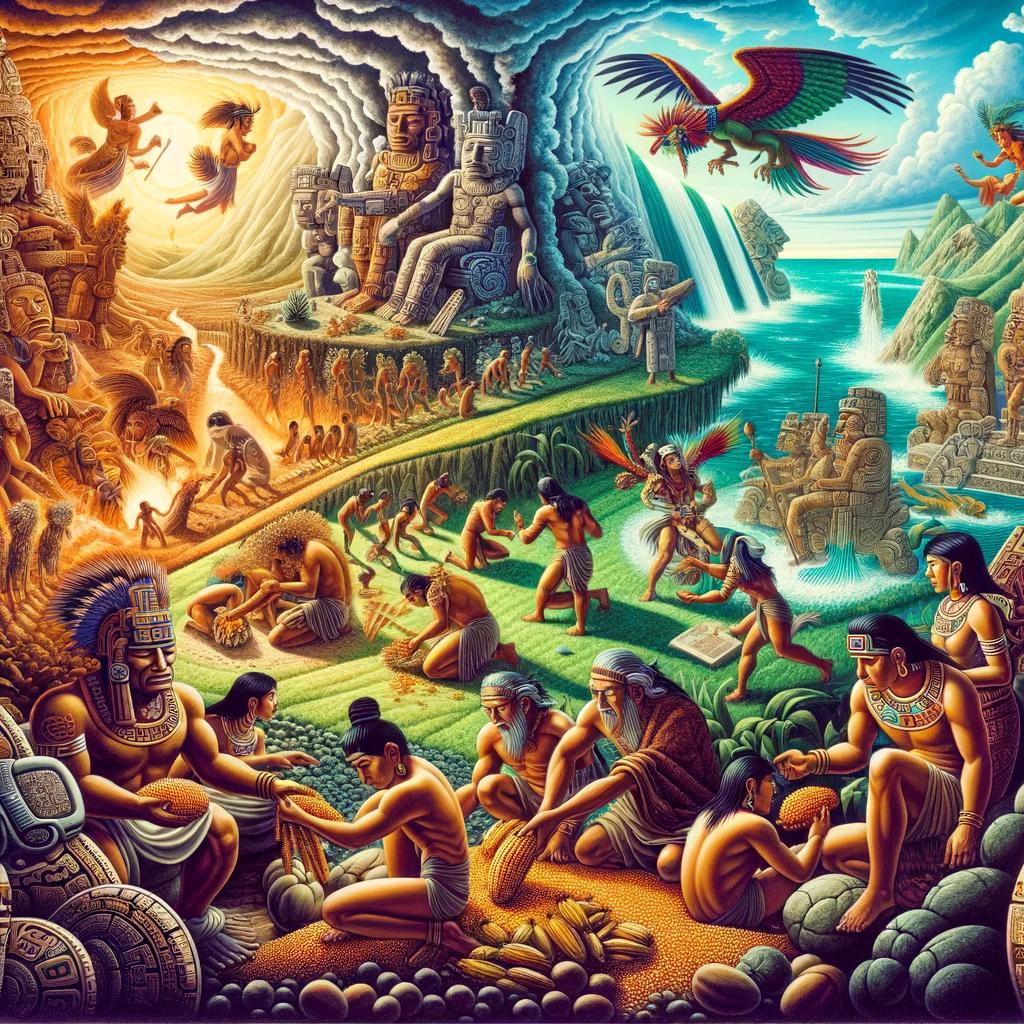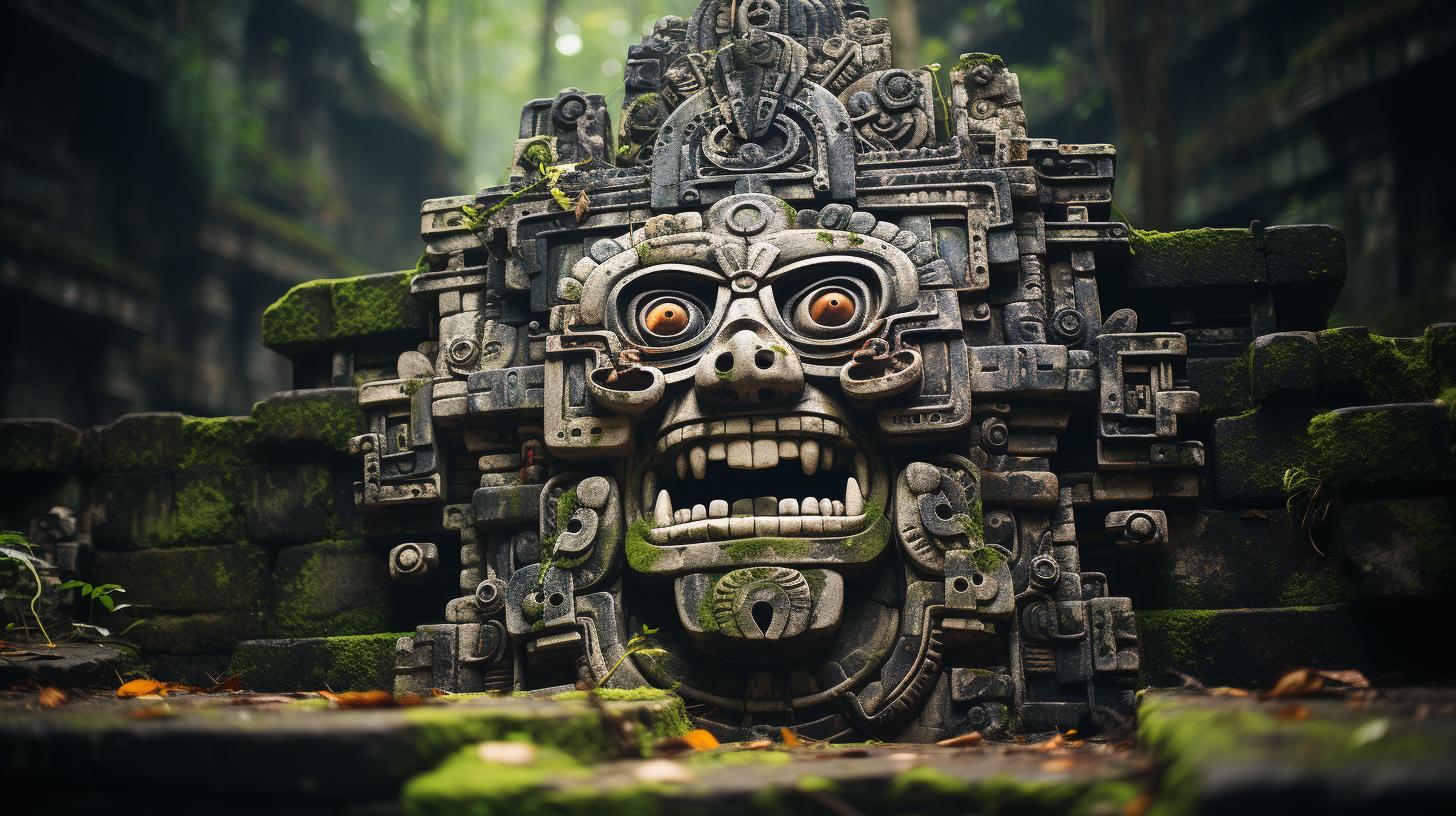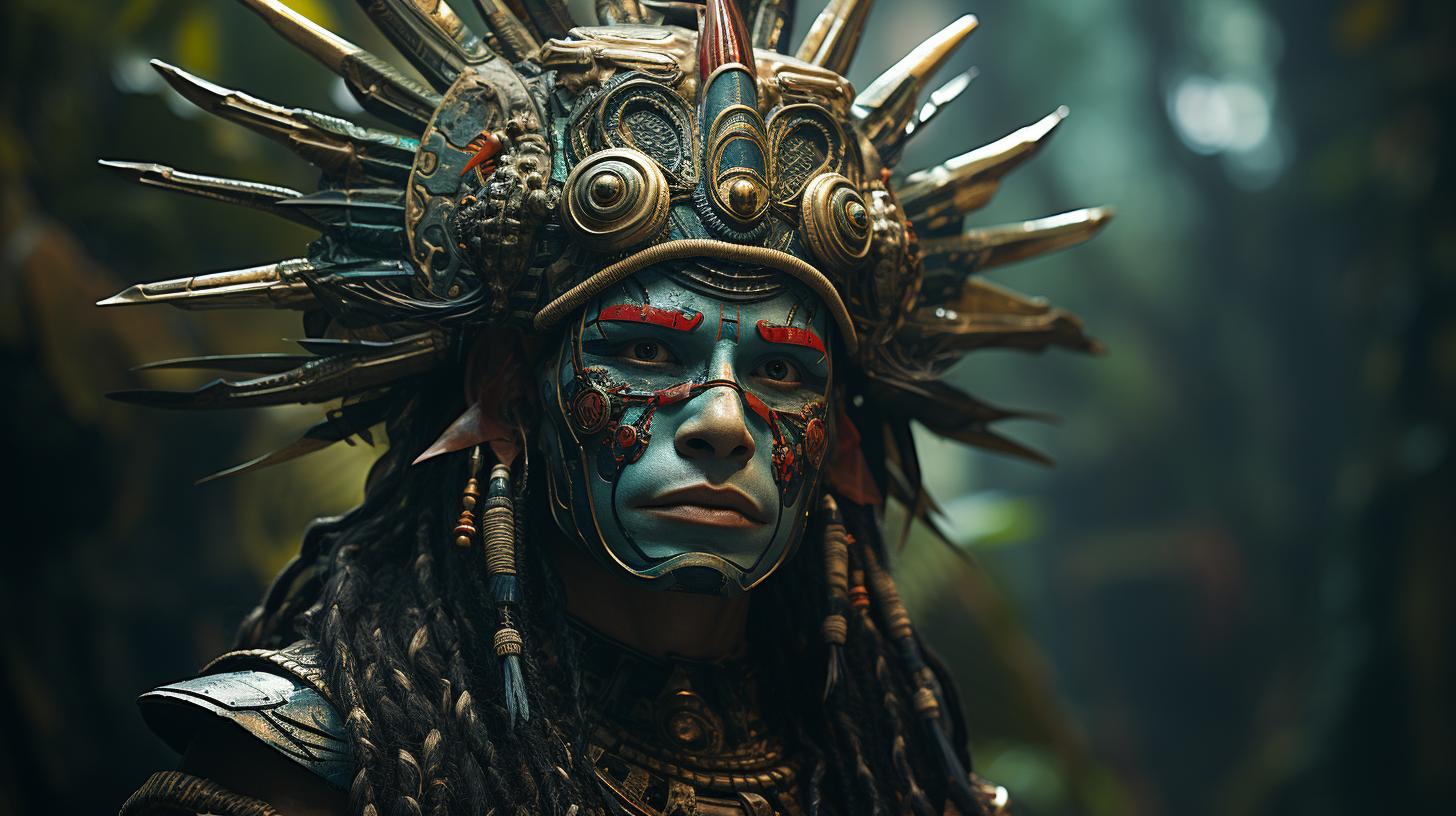Bitol Mayan God: Unveiling the Mysteries of this Ancient Deity
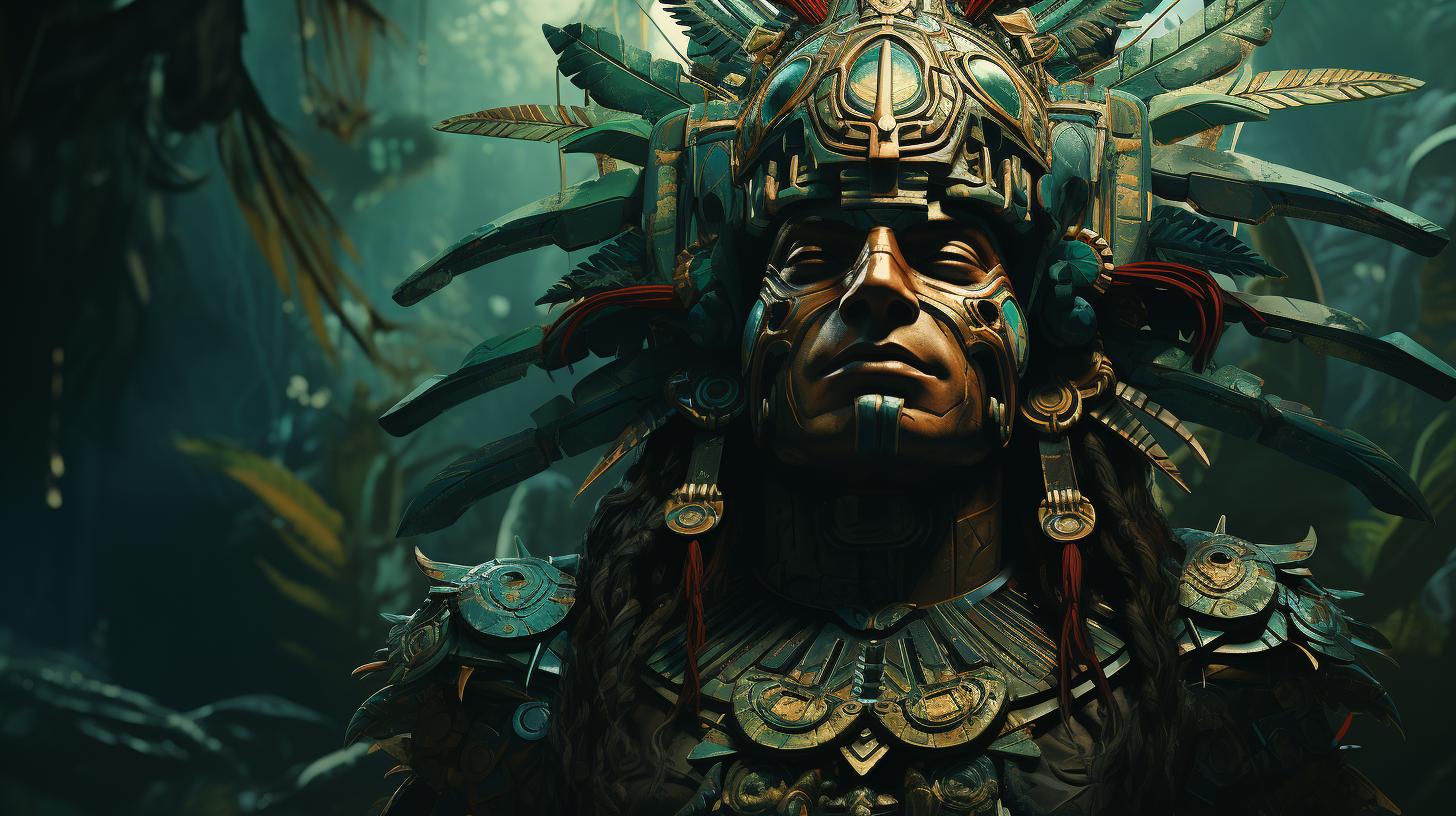
The article provides an overview of Bitol, the Mayan god, and explores its significance in Mayan mythology and culture. It delves into Bitol’s role in creation myths, its connection to the underworld, and its association with life and earth.
The article also discusses other prominent deities in Mayan mythology and examines the misconceptions and interpretations surrounding Bitol. It highlights the cultural significance and legacy of Bitol, its influence on contemporary Mayan traditions, and its impact on literature, art, and entertainment.
The article concludes with the exploration of current research and excavations related to Bitol.
Overview of the Mayan Pantheon
The Mayan pantheon consisted of a diverse array of gods and deities that were worshipped throughout the Mayan civilization. These gods played a central role in Mayan culture and religion, governing various aspects of life, nature, and the cosmos.
The Mayans believed that these gods had the power to influence the weather, control the fertility of the land, and even determine the fate of individuals.
While the specific gods worshipped varied among different Mayan cities and regions, there was a shared understanding of their general characteristics and significance.
The Mayans believed that the gods were responsible for maintaining order in the world, ensuring the cycle of life, death, and rebirth. They provided hope for an afterlife, helping people navigate the challenges they faced in their daily lives.
Each god had their own attributes, roles, and domains. Some were associated with natural forces like rain, thunder, and agriculture, while others governed aspects of human existence such as birth, death, and fertility.
The depiction of these gods varied in artistic representations, with their distinctive features and symbols.
Understanding the Mayan pantheon is crucial for comprehending the complex religious and cultural beliefs of this ancient civilization.
Exploring the various gods and their roles provides valuable insights into the Mayan worldview, their relationship with the natural world, and their understanding of human existence.
The Story of Bitol, the Mayan God
Bitol, one of the captivating figures in Mayan mythology, holds a significant place in the pantheon of Mayan deities.
The story of Bitol revolves around its role in the creation of the world and its influence over various aspects of Mayan life and rituals.
According to ancient Mayan beliefs, Bitol was one of the gods involved in the creation of human beings.
Its divine power, combined with the essence of other gods, gave birth to the first humans. Bitol played a crucial part in shaping the destiny and characteristics of humanity, imparting wisdom, strength, and resilience to the people.
As the Mayan mythology goes, Bitol had a close association with both life and death. It was believed that Bitol, as the patron of life and earth, ensured the fertility of the land and the abundance of crops.
The Mayans regarded Bitol as the provider of sustenance and the protector of their survival.
Additionally, Bitol’s association with Xibalba, the Mayan underworld, added a compelling layer to its story. Xibalba represented a dark and treacherous realm where souls journeyed after death.
Bitol played a role in guiding and judging the souls during their transit through Xibalba, ensuring their safe passage to the afterlife.
Bitol’s story intertwines with other prominent Mayan deities, such as the Twins (Hunahpu and Xbalanque), Vucub Caquix, Chimalmat, Hunahpu, Vucub Hunahpu, and the World Girdling Serpent (Hapikern).
Together, these beings shaped the myths, rituals, and beliefs of the Mayan civilization.
Through rituals, prayers, and offerings, the Mayans sought to honor and connect with Bitol, seeking its guidance and protection.
Bitol’s story continues to captivate researchers, archaeologists, and enthusiasts alike, as they unravel the depth of its significance in Mayan culture.
Creation Myths in Mayan Culture
The Mayan culture is rich with creation myths that provide insights into their beliefs and the origin of human beings. These myths vary across different Mayan communities and regions, but they share common themes and elements.
The Thirteen Gods and the Creation of Human Beings
One prominent creation myth among the Mayans involves the participation of thirteen gods in the formation of human beings. According to this myth, each god contributed a specific attribute or characteristic to humans, such as intelligence, strength, artistic skills, and more.
Together, these gods worked harmoniously to shape the first humans.
The Popol Vuh: The Quiche Texts on Creation
A significant and well-known source of Mayan creation myths is the Popol Vuh, an ancient text that originated from the Quiche Maya civilization. The Popol Vuh narrates the story of the creation of the world and human beings.
It explores the adventures of the Hero Twins, Hunahpu and Xbalanque, as they face challenges from deities and ultimately bring about the birth of humanity.
The Popol Vuh also delves into the concept of multiple creation cycles and the different worlds that existed before the current one.
These creation narratives not only explain the origin of human life but also emphasize the cyclical nature of time and the interconnectedness of all things in Mayan cosmology.
These creation myths hold deep cultural and spiritual significance for the Mayan people, shaping their understanding of their origins, purpose, and relationship with the natural and supernatural realms.
Bitol’s Role in Mayan Life and Rituals
The god Bitol played a significant role in the daily lives and rituals of the ancient Maya civilization. As the patron of life and earth, Bitol was revered for the vital connection between human existence and the bountiful fertility of the land.
Bitol as the Patron of Life and Earth
Bitol was believed to be the embodiment of life itself, overseeing the cycles of birth, growth, and abundance. The Maya worshipped Bitol to ensure the prosperity of their agricultural endeavors and the stability of their communities.
Rituals and offerings were dedicated to Bitol in gratitude for the sustenance provided by the earth.
Through ceremonies and prayers, the Maya sought Bitol’s blessings for bountiful harvests, healthy births, and overall well-being.
They recognized the interconnectedness of humanity and nature, acknowledging that their survival depended on respectful and harmonious coexistence with the earth.
Bitol’s Association with Xibalba, the Mayan Underworld
In addition to Bitol’s role as the patron of life and earth, the god also had a significant association with Xibalba, the Mayan underworld. Xibalba was believed to be a dark and treacherous realm inhabited by various deities and spirits.
The Maya believed that after death, the soul had to traverse through Xibalba’s challenging landscapes and encounter its formidable inhabitants. Bitol served as a guide and protector on this perilous journey, ensuring the safe passage of the deceased and the continuation of their existence in the afterlife.
Rituals and offerings were held to appease Bitol and gain favor in the underworld. The Maya believed that by honoring Bitol, they could ensure the well-being and protection of their departed loved ones in the realm of Xibalba.
Bitol’s association with both life and the underworld demonstrates the duality and complexity of this deity within Mayan belief and ritual practices.
Overall, Bitol’s role as the patron of life and earth, as well as its association with the Mayan underworld, highlights the importance of balance, reverence, and interconnectedness in the ancient Mayan worldview.
The rituals and ceremonies dedicated to Bitol reflect the deep spiritual connection the Maya had with the natural world and the profound significance they placed on the cycles of life and death.
Other Prominent Deities in Mayan Mythology
Mayan mythology is rich with a diverse pantheon of gods and supernatural beings. Alongside Bitol, there are several other prominent deities that play significant roles in Mayan culture and belief system.
The Twins: Hunahpu and Xbalanque
Hunahpu and Xbalanque, known as the Hero Twins, are central figures in Mayan mythology. They are revered as divine heroes who embark on a series of adventures and trials, triumphing over various challenges and enemies.
These heroic twins are associated with the sun and the moon, symbolizing balance and duality in the natural world.
Vucub Caquix and Chimalmat: The Creator and Destroyer Deities
Vucub Caquix and Chimalmat are powerful deities with contrasting roles. Vucub Caquix, also known as the Seven Macaw, represents vanity, arrogance, and false pretenses. Chimalmat, his wife, embodies deceit and trickery.
Together, they symbolize the destructive forces present in the world, constantly challenging the cosmic order.
Hunahpu and Vucub Hunahpu: Divine Heroes
Similar to the Hero Twins, Hunahpu and Vucub Hunahpu are revered as divine heroes in Mayan mythology. They embark on sacred quests, facing trials and battles to maintain the balance between the earthly and supernatural realms.
Hunahpu and Vucub Hunahpu hold great significance in various Mayan creation myths and are revered for their bravery and wisdom.
The World Girdling Serpent: Hapikern
Hapikern, also known as the World Girdling Serpent, is a prominent Mayan deity associated with the cycles of time and the underworld. Depicted as a serpent that encircles the world, Hapikern symbolizes the connection between the earthly and spiritual realms.
It is believed to have immense power and influence over the cosmic order and plays a crucial role in Mayan cosmology.
Bitol Mayan God: Misconceptions and Interpretations
Bitol in Post-conquest Mayan Art and Beliefs
Following the Spanish conquest of the Mayan civilization, there was a significant shift in the representation and interpretation of Bitol in Mayan art and beliefs. The influx of Christian influences and the efforts of the Spanish in spreading their religion led to the blending of Mayan mythology with Christian concepts.
Bitol, as depicted in post-conquest Mayan art, often took on characteristics reminiscent of Christian figures such as saints or angels. This blending of imagery resulted in a syncretic representation of Bitol, amalgamating elements of Mayan religious beliefs with Christian symbolism.
Moreover, the interpretations of Bitol underwent significant changes during this period. The Spanish missionaries viewed Bitol as a demon or an evil entity due to their limited understanding of Mayan mythology.
This misinterpretation further distorted the perception of Bitol among the Spanish and subsequent generations.
Bitol and the Influence of Christianity
The influence of Christianity continued to shape the understanding and perception of Bitol among the Mayan people. As the Catholic faith became more dominant, Bitol was gradually associated with negative connotations, often seen as a demonic figure or an obstacle in the path of Christian conversion.
This assimilation of Bitol into Christian beliefs led to the decline of its original significance and the fading of its representation in Mayan rituals and ceremonies. With the spread of Christianity, the veneration of Bitol diminished, and its existence in contemporary Mayan practices became blurred.
However, despite the attempts to erase Bitol from Mayan culture, its memory and influence persist among certain indigenous communities. Some groups continue to preserve the ancient traditions and stories associated with Bitol, asserting their cultural identity and challenging the imposed Christian interpretations.
- The blending of Mayan mythology with Christian concepts resulted in a syncretic representation of Bitol in post-conquest Mayan art.
- The Spanish misinterpretation of Bitol as a demon or evil entity distorted the perception of Bitol among subsequent generations.
- Bitol’s association with negative connotations in Christian beliefs led to its decline in Mayan rituals and ceremonies.
- Despite attempts to erase Bitol, its memory and influence persist among certain indigenous communities, challenging the imposed Christian interpretations.
Cultural Significance and Legacy of Bitol
The deity Bitol holds immense cultural significance in Mayan traditions, leaving a lasting legacy that is still observed today.
Through contemporary Mayan traditions and festivals, Bitol’s presence and influence continue to be celebrated and honored.
Bitol in Contemporary Mayan Traditions and Festivals
Bitol remains an integral part of contemporary Mayan traditions and festivals. During annual ceremonies and festivities, communities gather to pay homage to this ancient god, demonstrating their deep-rooted cultural connections and reverence for Bitol.
These rituals often involve music, dance, and offerings to honor Bitol’s role in Mayan history and mythology.
Bitol in Non-profit Organizations and Indigenous Rights Movements
Bitol’s legacy transcends traditional celebrations and extends into non-profit organizations and indigenous rights movements. It serves as a symbol of cultural heritage and indigenous identity, inspiring activists to preserve Mayan traditions, advocate for indigenous rights, and protect ancestral lands.
Bitol’s representation in various non-profit initiatives fosters cultural pride and solidarity among Mayan communities, empowering them to assert their cultural rights and protect their heritage from external influences. By featuring Bitol in the framework of indigenous rights movements, organizations aim to promote cultural diversity, raise awareness, and challenge marginalization.
Exploring the Influence of Bitol’s Mythology on Modern Understanding
The mythology surrounding Bitol, the Mayan god, has had a profound impact on shaping Mayan identity and preserving their rich cultural heritage. By delving into Bitol’s mythology, scholars and researchers have gained a deeper understanding of the complex belief systems, rituals, and traditions of the ancient Mayan civilization.
Bitol’s Role in Shaping Mayan Identity and Cultural Preservation
Bitol’s mythology provides valuable insights into the beliefs and values that formed the foundation of Mayan culture. Through the study of Bitol’s role as the patron of life and earth, researchers have uncovered how the Mayans deeply revered and honored their natural surroundings.
This reverence for nature is still evident today in the preservation of Mayan eco-systems and the emphasis on sustainable living.
Moreover, Bitol’s mythology has played a significant role in shaping Mayan identity.
The stories and rituals associated with Bitol have served as a unifying force, connecting present-day Mayans with their ancestors and reinforcing a shared sense of cultural pride. The continued celebration of Bitol in contemporary Mayan traditions, festivals, and ceremonies serves as a testament to the enduring impact of this deity on the Mayan people.
Analyzing Bitol’s Impact on Literature, Art, and Entertainment
Bitol’s mythology has not only influenced Mayan identity but has also permeated various forms of artistic expression. In literature, Bitol’s stories and symbolism have been incorporated into contemporary Mayan literature, enabling the preservation and dissemination of Mayan cultural heritage to a wider audience.
Bitol’s depiction in art, both ancient and modern, reflects the intricate symbolism and artistic traditions of the Mayans, allowing for a visual representation of their mythology.
Furthermore, Bitol’s mythology has been a source of inspiration for entertainment mediums such as movies, theater productions, and music.
The timeless themes and captivating narratives surrounding Bitol have provided a fertile ground for creative interpretations and adaptations, showcasing the enduring appeal and relevance of Mayan mythology in modern popular culture.
The exploration of Bitol’s mythology continues to shed light on the profound influence this deity has had on Mayan identity, cultural preservation, and artistic expressions. By understanding Bitol’s impact on modern understanding, we gain a deeper appreciation for the enduring legacy of the Mayan civilization and its rich mythological traditions.
Unveiling the Mysteries of Bitol: Current Research and Excavations
Current research and excavations provide valuable insights into the enigmatic deity, Bitol, and shed light on its significance within Mayan mythology and culture. Scholars and archaeologists have embarked on various excavations in ancient Mayan sites to uncover artifacts, inscriptions, and architectural features that offer clues about Bitol’s role and worshippers.
One notable excavation took place in a temple complex located in the region associated with Bitol’s worship. Archaeologists discovered intricately carved sculptures depicting Bitol in elaborate headdresses and ceremonial attire. These sculptures suggest Bitol’s high status and importance within Mayan religious practices.
Ancient writings and codices have also contributed to our understanding of Bitol. The recently deciphered fragment from the Madrid Codex references Bitol’s participation in cosmic events and underscores the deity’s connection to the celestial realm.
This revelation has sparked further investigations into Bitol’s celestial role and its influence on Mayan cosmology.
Advancements in technology, such as LiDAR (Light Detection and Ranging), have revolutionized the field of Mayan archaeology.
By using airborne laser scanning, researchers have been able to map previously concealed structures and identify potential sacred sites associated with Bitol. These findings have opened new avenues for exploration and revealed previously unknown aspects of Bitol’s worship.
Collaborative efforts between researchers and indigenous communities have played a crucial role in uncovering the mysteries surrounding Bitol. Local knowledge and oral traditions have guided excavations, providing valuable insights into the rituals and practices associated with Bitol worship.
This collaborative approach ensures the preservation of cultural heritage and fosters a deeper understanding of Bitol’s significance within contemporary Mayan communities.
The ongoing research and excavations strive to piece together Bitol’s story and unravel the complexities of its role within Mayan society.
As new discoveries emerge, our understanding of Bitol continues to evolve, shedding light on this enigmatic deity and its profound impact on Mayan spirituality and cultural identity.
.











